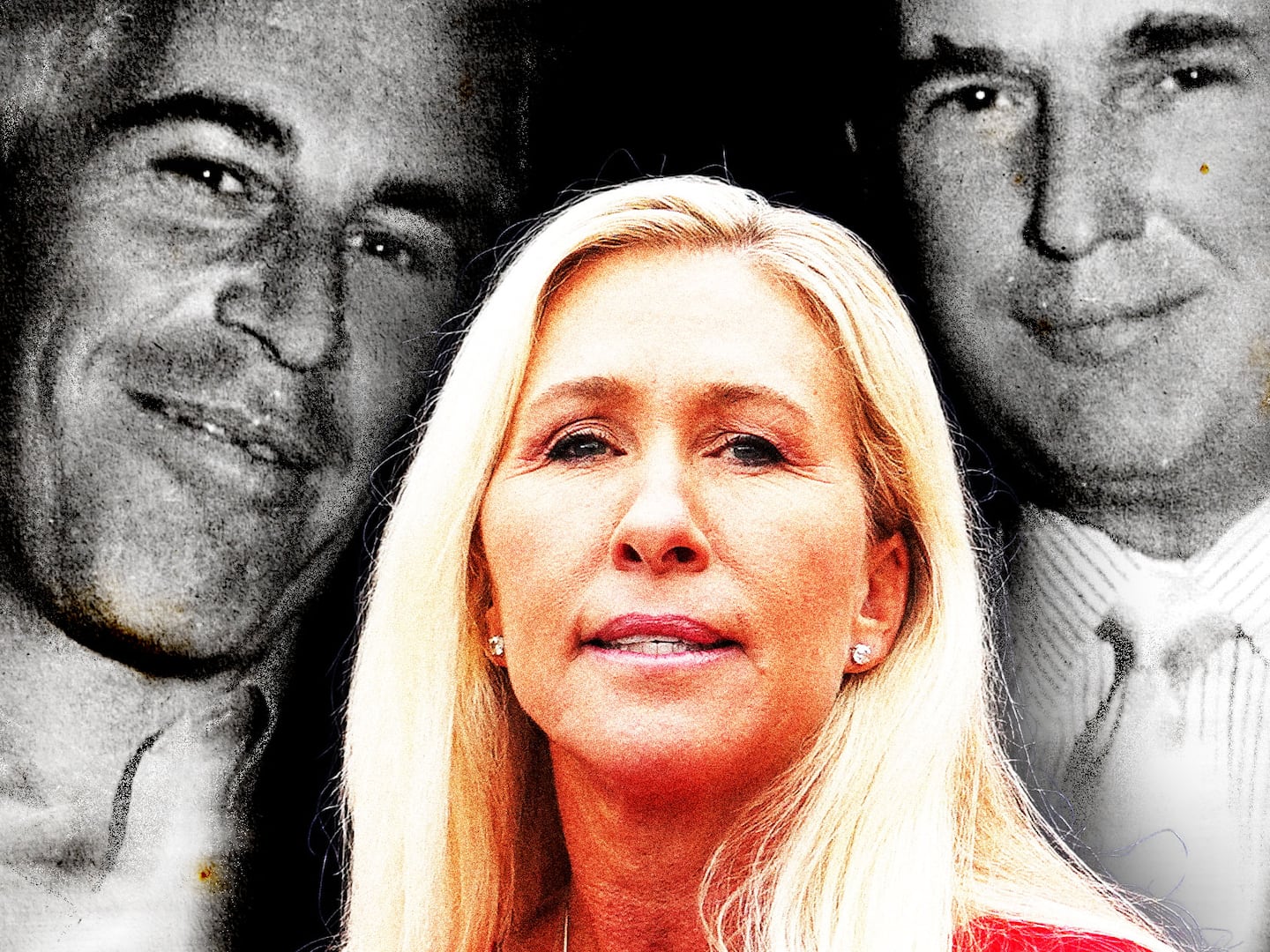According to legend, the perpetual five o’clock shadow that studded Sinéad O’Connor’s skull for most of her life started out as a defiant fuck-you to the music industry—and, in particular, the record executives who wanted her to “tart” herself up a tad.
A 1990 profile in Spin magazine by music journalist Legs McNeil dutifully relates this tale. When record executives told her to act “girlie,” McNeil writes, O’Connor went to the barber and demanded her head be shorn.
O’Connor’s stubbly scalp was her most recognizable trait. It featured prominently on most of her albums, including her 1990 masterpiece, I Do Not Want What I Haven’t Got. It gave her a silhouette (all icons need one) and an edge.
It was also a symbol with the power to exacerbate whatever you already thought about her—that she was a defiant warrior; a freak; an insecure woman; an angst-ridden teen; a little girl who needed saving. It nearly became synecdoche for all that she was, until she climbed onstage and reminded you that, no, she was not just her shaved head. Rather, it was a part of her—no more, no less.
But first, they had to print the legend.
O’Connor, who was reported dead at age 56 on Wednesday, had a hand in her own mythmaking. She wrote in her 2021 memoir Rememberings that when a record exec in London ordered her to grow her thick, black hair out and start dressing in miniskirts, she whipped around to the other suit in the room and challenged him. “Lemme get this straight: He wants me to look like your mistress and the bird he left his wife for?”
The next day, O’Connor traipsed down to the barber’s shop, where a young Greek barber shed a single horrified tear as he took the buzzer to her scalp. His weeping, she reminded The Washington Post in an interview promoting Rememberings, was reminiscent of the single tear she herself shed in the “Nothing Compares 2 U” music video.
There’s little utility, at this point, in questioning whether or not either scene ever actually happened. But it’s worth asking whether her distinctive look was a reaction to industry pressure, or something else entirely. In a 1991 book about O’Connor’s life and music, author Jimmy Guterman theorized that “Sinéad pulverized her hair for her own reasons… All evidence suggests that she did it for herself, not as a response to someone else’s unreasonable demands.”
O’Connor herself agreed, at times. “I was never making a statement,” she told Spin in 1991. “I just was bored one day and I wanted to shave my head, and that was literally all there was to it.”
But at least one record exec, the late Nigel Griange, who was intimately involved in the production of O’Connor’s explosive debut album, testified that he and his team ascribed meaning to her baldness the second they clocked it. “She was always playing with her hair,” he told Rolling Stone in 1990. “One minute she had a Mohican. That was on for a couple of weeks, and then it all went—she walked in, and she had shaved herself bald.”
“We thought,” he added, “‘Well, there’s a statement.’”

But even if it wasn’t a statement to O’Connor, the shaved look was undeniably a tool. Contrary to McNeil’s assessment that she “was just making it up as she went along,” there was an element of strategy to O’Connor’s rise through the industry.
“Cutting my hair turned out to serve a very useful purpose,” she told a different Spin journalist in 1988. “I think it’s good that there is a shocking element to the way I look. People expect to hear one thing, and what they do hear is completely different.” In other words, it was showmanship, designed to draw people in. Maybe they’d like her music, buy her records, and come to her shows.
If the shaved head was a marketing tactic, it was a bombastically successful one. Her explosive, self-produced debut album, 1987’s The Lion and the Cobra, surpassed all expectations. (Label bigwig Mike Bone allowed O’Connor to shave his head after he lost a bet over whether she’d sell 50,000 copies.)
But once O’Connor created this image and placed it on the public stage, other people were suddenly free to run with it, sinking their claws into it and playing with it, trying to interpret her. She became a supernatural creature (Rolling Stone) and a female version of The Sex Pistols’ Johnny Rotten (New Musical Express). With her Doc Martens, she was a little too close to the punks who flirted with fascist ideology for some; when she stenciled Public Enemy’s logo onto her head at the 1989 Grammys in solidarity with the band, she was too political for others.
Then there were those who used her bald pate to sexualize and infantilize her. “Needless to say, her skinhead look renders her beauty inaccessible only to the narrow-minded,” drooled the Village Voice critic. Rolling Stone mused over her “harsh beauty.” The worst culprit of all was Legs McNeil, who spends much of his Spin profile telling the reader that he’s fallen in love with his subject, who was then 22 years old and a decade younger than him.
He calls her a “vixen succubus” with “the most beautiful, fuckable Irish Brogue and skin that looks like it would melt butter.” He wants to pick her up and throw her across the table, even in her unfashionable Elmer Fudd-style hat, he informs us. In a 2022 blog post that diagnoses O’Connor with “Joan of Arc syndrome,” McNeil meditates on the profile and his subsequent encounters with O’Connor, recalling an episode where he squired her up to Harlem so she could get “tram lines” carved into her hair. No one in the barber’s shop could understand her accent, so McNeil interpreted as she settled into, he writes, a child’s seat on the barber chair.
As her most distinctive trait, it was also an easy target for those determined to make her a late-night joke. Comedian Arsenio Hall referred to her as “that little bald lady,” while Andrew Dice Clay, perhaps stung by her refusal to appear on SNL alongside him, poked fun at the “bald chick” in a sketch.
O’Connor was undoubtedly aware of the obsession with her image, if not deeply affected. In a televised interview with journalist Maria Shriver, she snapped at a cameraman, ordering him to stop filming her combat boots. To Rolling Stone, she turned the media’s gaze back on itself. “When the press looked at me, they saw a woman with a shaved head and a pair of Doc Marten boots, and they assumed that I was aggressive and strong and tough,” she said. “The truth is, I’m not really any of those things.”
In 1990, she penned an appeal to the public disguised as a lengthy poem, publishing it in The Irish Times. “My name is Sinéad O’Connor,” it began. “I am learning to love myself. I am deserving. I deserve to be treated with respect. I deserve not to be treated like dirt. I deserve to be listened to. I am a member of the human race. I deserve not to be hurt… (Remember you do not know me).”

The poem did not once mention her shaved head, but it did allude to a nightmarish childhood, where she had been “tortured and abandoned and spat at and abused.” In later years, she would draw a direct line between these early traumas and the decision to go bald. In a 2017 interview with Dr. Phil, she explained, “My sister had the most beautiful red hair, glorious red hair, the type you’d be jealous of,” but that her mother had taken it “into her head that my sister’s hair was ugly, and horrible, and disgusting.”
So O’Connor’s mother, who died in a car crash when she was 18, “would introduce us as her pretty daughter and her ugly daughter,” she continued. “And that’s why I cut my hair off. I didn’t want to be pretty.”
A shorn head was also a shield from potential future traumas, she told Dr. Phil. “It was dangerous to be pretty because I was getting raped and molested everywhere I went. That was a huge part of it. I didn’t want to be raped or molested, I didn’t want to dress like a girl,” she said, repeating, “I didn’t want to be pretty.”
By the time of that interview, though, whether gimmick or shield or fuck-it-why-not decision, O’Connor’s baldness was as indelibly a part of herself as that soaring voice that made her audience’s bones shake, pulling them in close, letting them feel the full force of her agony and her ecstasy. In 2007, she told The Guardian that she didn’t “feel like me” unless she had her head shaved.
“So even when I’m an old lady,” she added, “I’m going to have it.”








